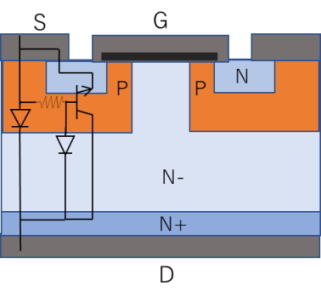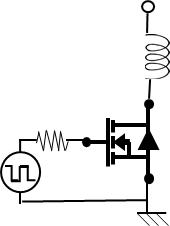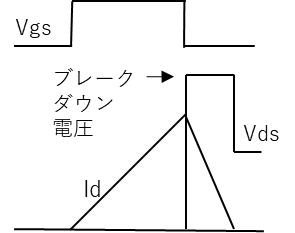MOSFET avalanche
When the MOSFET turns off, it may enter the breakdown voltage region due to a surge voltage due to the load inductance. At this time, the reverse-biased PN junction inside the MOSFET causes an avalanche breakdown, and an avalanche current begins to flow. This is the state where avalanche breakdown occurs inside the MOSFET. It is a state in which a voltage exceeding the withstand voltage is momentarily applied between the drain and source of the MOSFET that is about to be turned off.
Avalanche current is only consumed inside the MOSFET and dissipated as heat if it is within the allowable range of the MOSFET.
However, if the avalanche current is large, the generated heat will cause the MOSFET to exceed the specified junction temperature, or the avalanche current will turn on the parasitic bipolar transistor, causing even greater current flow, leading to MOSFET failure.
What is avalanche tolerance?
The avalanche capability of a MOSFET is the energy that the MOSFET can tolerate when it reaches its breakdown voltage and undergoes avalanche breakdown. The MOSFET's avalanche capability is the amount of inductance load current that the MOSFET can tolerate, that is, the amount of inductance load current that the MOSFET can consume within the range that does not exceed the specified junction temperature, expressed in energy.
In the data sheet, the avalanche capability is specified for a single pulse, that is, a single avalanche condition. If it is repeated, it may be necessary to devise a design that does not lead to an avalanche state.
Microchip's SiC-MOSFET has an avalanche capability of 3500mJ (@25°C) for the MSC017SMA120B4 (1200V / 15mΩ).






Inquiry
If you have any questions regarding this article, please contact us below.
To Microchip manufacturer information Top
If you want to return to Microchip manufacturer information top page, please click below.
